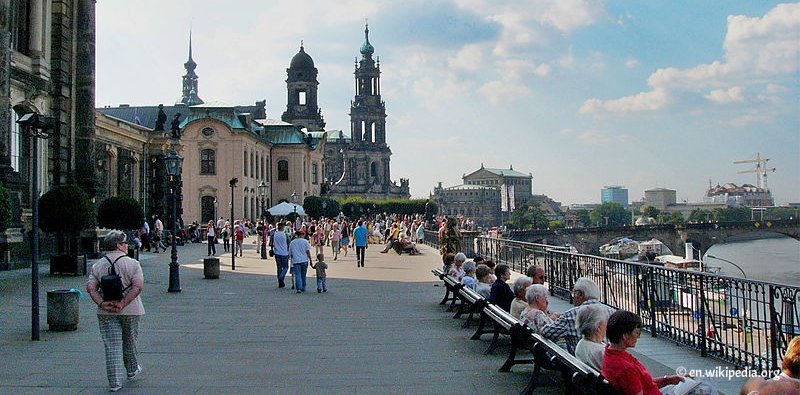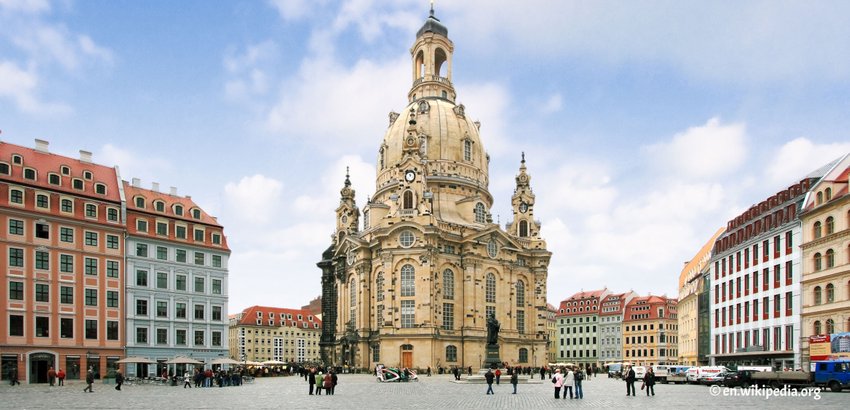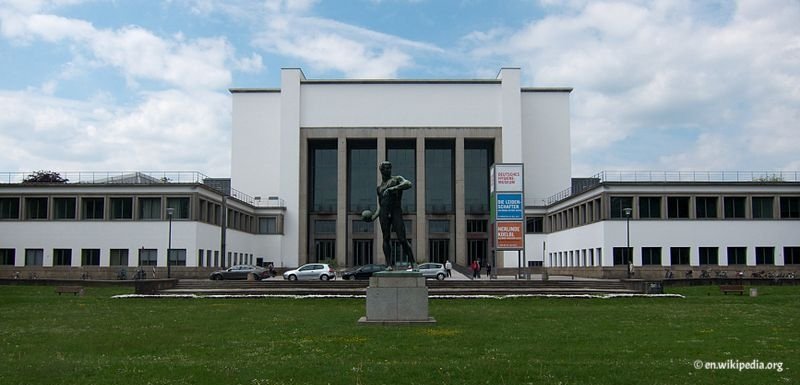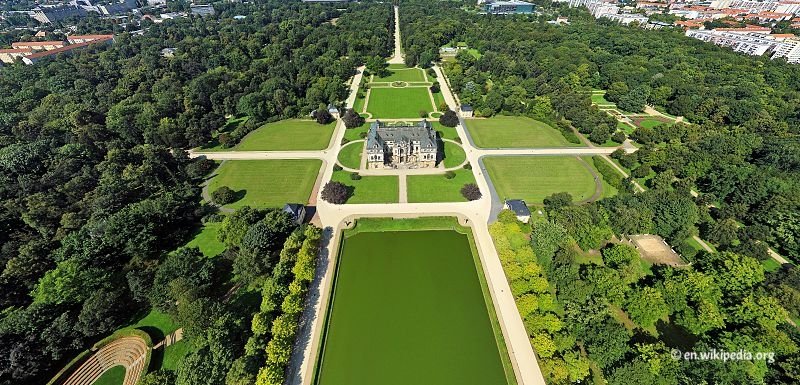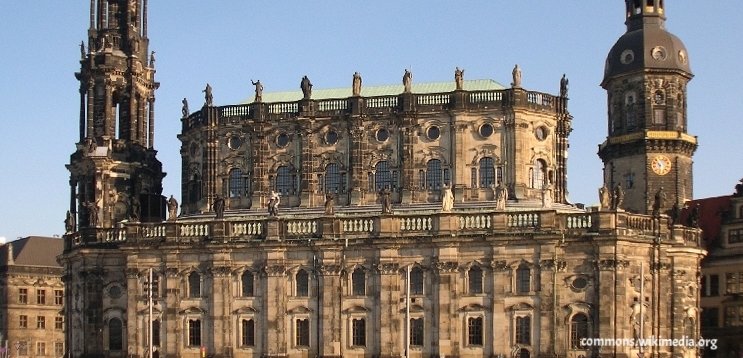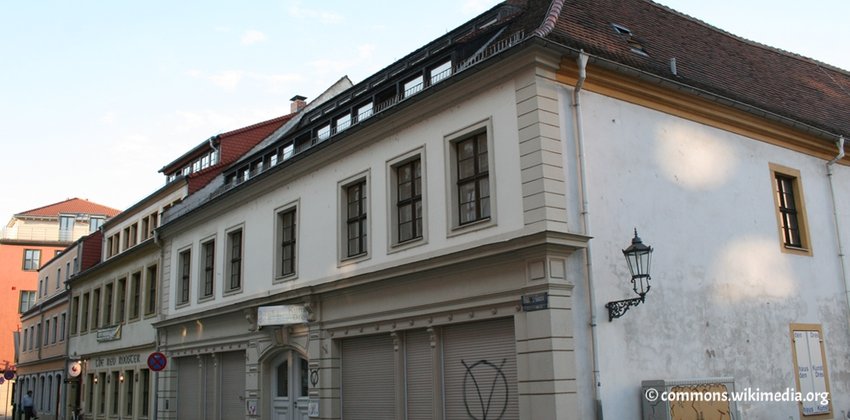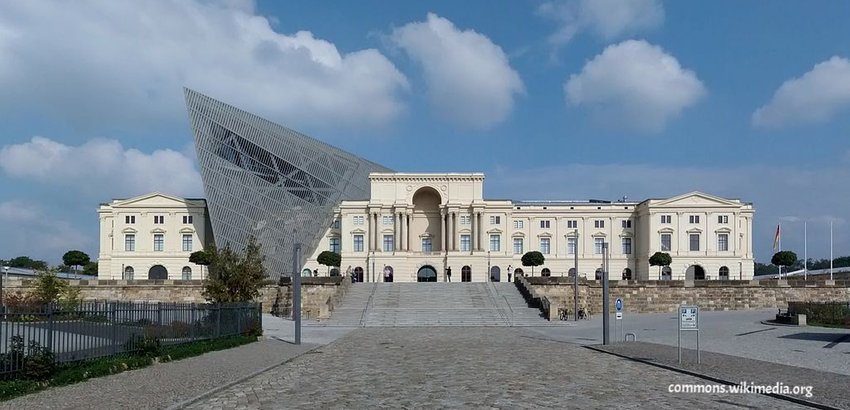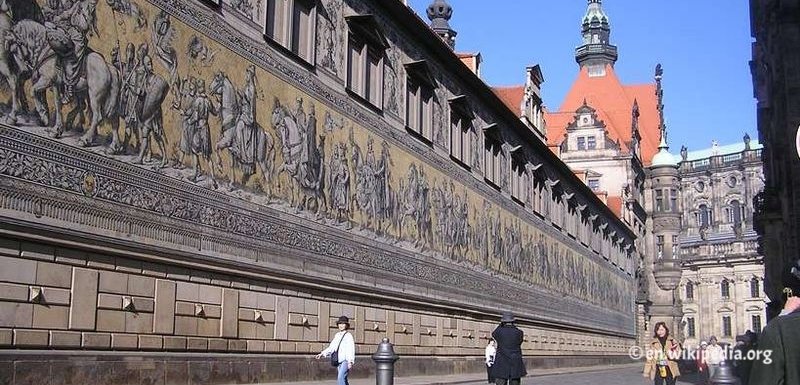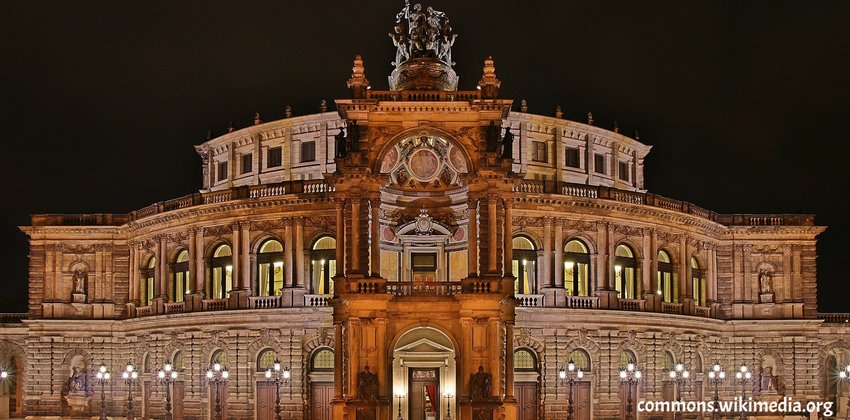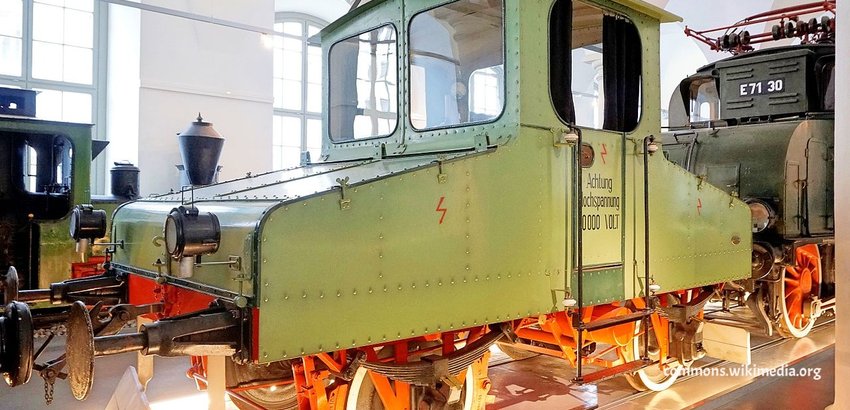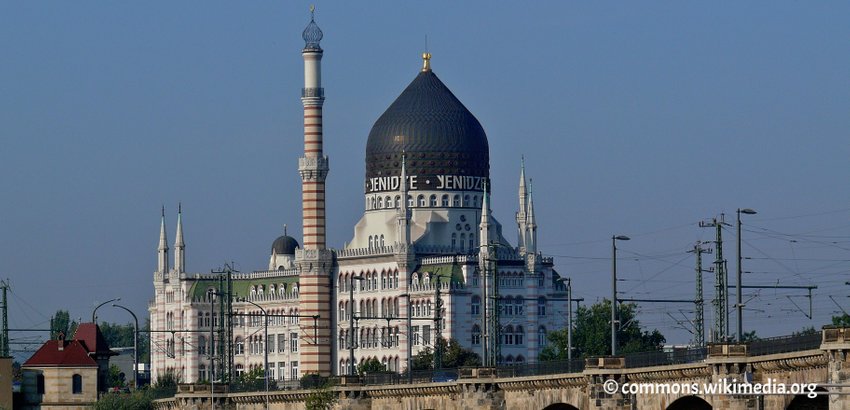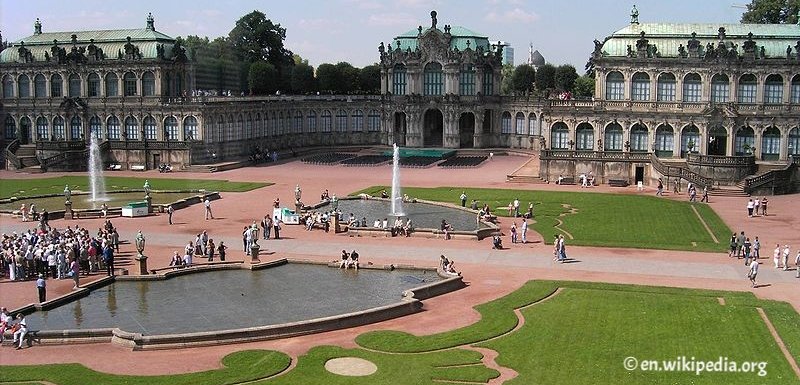Dresden
Dresden is the capital city of the Free State of Saxony in Germany. It is situated in a valley on the River Elbe, near the Czech border. You can buy our complete Dresden City Guide on Apple Store or Google Play Store.
Most popular places to visit in Dresden are:
Albertinum Museum
The Albertinum museum is a modern art museum. The sandstone-clad Renaissance Revival building is located on Brühl's Terrace in the historic center of Dresden. The museum is named after King Albert of Saxony.
The Albertinum hosts the New Masters Gallery and the Sculpture Collection of the Dresden State Art Collections. The museum presents both paintings and sculptures from Romanticism to the present, covering a period of some 200 years.
Address: Tzschirnerplatz 2, 01067 Dresden
Reach: Tram: 3, 7, 8, 9 (Dresden Synagoge)
Opening Hours:
Tue - Sun: 10:00 - 18:00
Mon Closed
Entrance Fee:
Adults: 10 €
Children (upto 17 years): Free
Website: www.skd.museum/albertinum
Bruhl Terrace
Brühl's Terrace also known as Brühlsche Terrasse, is a historic architectural ensemble in Dresden. Nicknamed The Balcony of Europe, the terrace stretches high above the shore of the river Elbe in a city which is quite large as measured
by area relative to its half a million inhabitants.
Located north of the recently rebuilt Neumarkt Square and the Frauenkirche, is one of the favourite inner-city places of both locals and tourists for walking, people watching and having a coffee.
Address: Georg-Treu-Platz 1, 01067 Dresden
Reach: Tram: 3, 7, 8, 9 (Dresden Synagoge)
Entrance Fee: Free
Dresden Frauenkirche
The Dresden Frauenkirche also known as Church of Our Lady or Dresdner Frauenkirche, is a Lutheran church in Dresden. It is considered an outstanding example of Protestant sacred architecture, featuring one of the largest domes in Europe.
For more than 200 years, the bell-shaped dome stood over the skyline of old Dresden, dominating the city. The completed church gave the city of Dresden a distinctive silhouette, captured in famous paintings by Bernardo Bellotto, a nephew of the artist Canaletto (also known by the same name), and in Dresden by Moonlight by Norwegian painter Johan Christian Dahl.
Address: Georg-Treu-Platz 3, 01067 Dresden
Reach: Tram: 1, 2, 4 (Altmarkt)
Opening Hours:
Mar - Oct:
Mon - Sat: 10:00 - 18:00
Sun : 12:30 - 18:00
Nov - Feb:
Mon - Sat: 10:00 - 16:00
Sun : 12:30 - 16:00
Entrance Fee: Free
Website: www.frauenkirche-dresden.de
German Hygiene Museum
The German Hygiene Museum also known as Deutsches Hygiene Museum, was founded in 1912 by Karl August Lingner, a Dresden businessman and manufacturer of hygiene products, as a public venue for healthcare education, following the first International Hygiene Exhibition in 1911.
It conceives itself today as a forum for science, culture and society. It is a popular venue for events and exhibitions, and is among the most visited museums in Dresden, with around 300,000 visitors per year.
Address: Lingnerplatz 1, 01069 Dresden
Reach: Tram: 10, 13 (Großer Garten)
Opening Hours:
Tue - Sun: 10:00 - 18:00
Entrance Fee:
Adults: 8 €
Children (upto 16 years): Free
Website: www.dhmd.de
Green Vault
The Green Vault also known as Grünes Gewölbe, is a unique historic museum that contains the largest collection of treasures in Europe. Founded by Augustus the Strong in 1723, it features a rich variety of exhibits from the Baroque to Classicism.
It is named after the formerly malachite green painted column bases and capitals of the initial rooms.
The Green Vault is located on the first and second floors of the western section of the Dresden castle. It is now part of the Dresden State Art Collections.
Address: Taschenberg 2, 01067 Dresden
Reach: Tram: 4, 8, 9 (Theaterplatz)
Opening Hours:
Mon - Sun: 10:00 - 18:00
Tue Closed
Entrance Fee:
Adults: 12 €
Children (until 17 years): Free
Website: www.skd.museum/gruenes-gewoelbe
Grosser Garten
The Großer Garten also known as Great Garden, is a baroque style park and the green lung of the city of Dresden. It is oblong in shape and covers an area of about 2 km² in a central location of the city.
A central feature of the park is the Sommerpalais. Features such as the Dresden Zoo and Dresden Botanical Garden were added late in that century. A miniature railway known as the Parkeisenbahn was developed by the youth organisations of the former GDR in 1950, and still operates in the park.
Address: Hauptallee 10, 01219 Dresden
Reach: Tram: 1, 2 (Comeniusplatz) 10, 13 (Dresden Großer Garten)
Opening Hours: Open all year round; it can be visited at any time
Entrance Fee: Free
Website: www.grosser-garten-dresden.de
Hofkirche
The Katholische Hofkirche also known as The Catholic Church of the Royal Court of Saxony, is a Roman Catholic Cathedral in Dresden. It is located near the Elbe River in the historic center of Dresden.
The Hofkirche stands as one of Dresden's foremost landmarks. It was designed by architect Gaetano Chiaveri from 1738 to 1751.
Address: Schloßstraße 24, 01067 Dresden
Reach: Tram: 4, 8, 9 (Theaterplatz)
Website: www.bistum-dresden-meissen.de
Kunsthof Passage
The Kunsthof-Passage Dresden is a courtyard in the Outer Neustadt in Dresden. This was designed by the architects Müller Müller, Knerer and Long, Hoopers and Heike Meyer Basin. As an artist Viola Schöpe, Annette Paul-André Tempel-Christoph Rossner, Arendt Zwicker and stone sculptor Sandner and Matz were responsible for the design of the exterior facades.
The Kunsthofpassage consists of a complex of five smaller courtyards. Each farm has in combining art and architecture design their own theme and its own name.
Address: Görlitzer Straße 21-25, 01099 Dresden
Reach: Tram: 13 (Görlitzer Straße Nordbad)
Website: www.kunsthof-dresden.de
Military History Museum
The Bundeswehr Military History Museum also known as Militärhistorisches Museum der Bundeswehr or MHM, is the military museum of the German Armed Forces, the Bundeswehr, and one of the major military history museums in Germany. It is located in a former military arsenal in the Albertstadt which is part of Dresden.
The museum focuses on the human aspects of war, while also showcasing the evolution of German military technology.
Address: Olbrichtplatz 2, 01099 Dresden
Reach: Tram: 7, 8 (Stauffenbergallee)
Opening Hours:
Mon: 10:00 - 21:00
Tue - Sun: 10:00 - 18:00
Wed: Closed
Entrance Fee:
Adults: 5 €
Children (upto 18 years): Free
Website: www.mhmbw.de
Procession of Princes
The Procession of Princes also known as Fürstenzug or Procession of Dukes, is a large mural of a mounted procession of the rulers of Saxony. It was originally painted between 1871 and 1876 to celebrate the 800th anniversary of the Wettin Dynasty, Saxony's ruling family.
In order to make the work weatherproof, it was replaced with approximately 23,000 Meissen porcelain tiles between 1904 and 1907. With a length of 102 metres (335 ft), it is known as the largest porcelain artwork in the world.
The mural displays the ancestral portraits of the 35 margraves, electors, dukes and kings of the House of Wettin between 1127 and 1904.
The Fürstenzug is located on the outer wall of the Stallhof (Stables Courtyard) of Dresden Castle.
Address: Augustusstrasse, 01067 Dresden
Reach: Tram: 4, 8, 9 (Theaterplatz)
Website: http://lebendigerfuerstenzug.de
Royal Palace
Royal Palace also known as Dresden Castle or Dresdner Residenzschloss or Dresdner Schloss, is one of the oldest buildings in Dresden. For almost 400 years, it has been the residence of the electors (1547–1806) and kings (1806–1918) of Saxony. It is known for the different architectural styles employed, from Baroque to Neo-renaissance.
Today, the residential castle is a museum complex that contains the Historic and New Green Vault, the Numismatic Cabinet, the Collection of Prints, Drawings and Photographs and the Dresden Armory with the Turkish Chamber.
Address: Taschenberg 2, 01067 Dresden
Reach: Tram: 4, 8, 9 (Theaterplatz)
Opening Hours:
Mon -Sun: 10:00 - 18:00
Tue: Closed
Entrance Fee:
Adults: 12 €
Children (upto 17 years): Free
Semper Opera House
The Semperoper is the opera house of the Sächsische Staatsoper Dresden (Saxon State Opera) and the concert hall of the Sächsische Staatskapelle Dresden (Saxon State Orchestra). It is also home to the Semperoper ballet. The building is located near the Elbe River in the historic centre of Dresden, Germany.
Address: Theaterplatz 2, 01067 Dresden
Reach: Tram: 4, 8, 9 (Theaterplatz)
Opening Hours:
Mon - Fri: 10:00 - 18:00
Sat - Sun: 10:00 - 17:00 (Jan - Mar: 10:00 – 13:00)
Sun: 10:00 - 13:00
Website: www.semperoper.de
Verkehrs museum
The Verkehrs museum also known as Dresden Transport Museum, displays vehicles of all modes of transport, such as railway, shipping, road and air traffic, under one roof.
The museum is housed in the Johanneum at the Neumarkt in Dresden. The Johanneum was built between 1586 and 1590; it is one of the oldest museum buildings in Dresden. The museum is divided into Railway, Cars, Trams, Bicycle and motorbikes, Air travel and Sea travel exhibition areas.
Address: Augustusstraße 1, 01067 Dresden
Reach: Tram: 1, 2, 4 (Altmarkt)
Opening Hours:
Tue - Sun: 10:00 - 18:00
Entrance Fee:
Adults: 9 €
Children (under 5 years): Free
Website: www.verkehrsmuseum-dresden.de
Yenidze
Yenidze is the name of a former cigarette factory building in Dresden. It was built between 1907 and 1909 and is used today as an office building. It is notable for its Orientalizing exterior design which borrows design elements from mosques.
Yenidze was the name of a tobacco company started by the Jewish entrepreneur Hugo Zietz. The architect Martin Hammitzsch designed the building in 1907. It has 600 windows of various styles; the dome is 20m high. It has large, colored dome chimneys which resemble minarets. It was sometimes referred to as the tobacco mosque or Tabakmoschee, a term which is no longer officially used as the building is not a mosque.
Address: Weißeritzstraße 3, 01067 Dresden
Reach: Tram: 10 (Weißeritzstraße)
Website: www.yenidze.eu
Zwinger Palace
The Zwinger also known as Der Dresdner Zwinger, is a palace in Dresden, built in Rococo style and designed by court architect Matthäus Daniel Pöppelmann. It served as the orangery, exhibition gallery and festival arena of the Dresden Court.
Today, the Zwinger is a museum complex that contains the Old Masters Picture Gallery or äldegalerie Alte Meister, the Dresden Porcelain Collection or Porzellansammlung and Royal Cabinet of Mathematical and Physical Instruments or the Mathematisch-Physikalischer Salon.
Address: Sophienstraße, 01067 Dresden
Reach: Tram: 4, 8, 9 (Theaterplatz)
Opening Hours:
Tue - Sun: 10:00 - 18:00
Mon: Closed
Entrance Fee:
Adults: 10 €
Children (upto 17 years): Free
Website: www.skd.museum/zwinger


